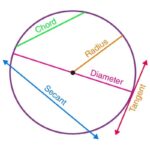How to Help Your Child With Math
As parents, every moment we spend with our children offers a golden opportunity. An opportunity to build a strong foundation, to spark confidence, and to make maths feel like a thrilling quest rather than a daunting chore. Remember the joy of discovering something new as a child? It’s time to channel that excitement and discover why maths is important in early years.
Let’s embark on this journey together, exploring the wonders of maths, and find out how to teach maths to kids in ways that resonate with their vibrant imaginations. Because every child deserves to see maths not just as numbers on a paper, but as a ticket to endless exploration.
How Do I Get My Child to Enjoy Maths?
Let’s face it, not every child jumps with joy at the mention of maths homework. But what if we could change that narrative? What if maths could become their favourite part of the day? Let’s dive into some exciting strategies!
Engaging and Interactive Maths Techniques
Gamify the Learning: Transform learning sessions into fun games. Whether it’s a card game that involves quick addition or a board game that teaches probability, turning maths into play can make a world of difference. For instance, use dice games to teach basic arithmetic. The challenge? Who can get to 100 first with their dice rolls!
Tech Integration: There are numerous apps and online platforms tailored to make maths fun. These platforms not only offer interactive maths puzzles but also adapt to your child’s learning pace, ensuring they’re always engaged and challenged.
Artistic Approach: Combine maths with art. Allow your child to create geometric patterns, measure the angles in their drawings, or even fold origami shapes to understand symmetry.
The Real-World Maths Connection
Shopping Adventures: Turn your grocery shopping trips into maths lessons. Ask your child to estimate the total cost of items in the cart or figure out the best deals using percentages. This is real-world maths in action and also helps them understand the value of money.
Cooking Together: The kitchen is a maths playground. From measuring ingredients to dividing the final dish into equal portions, every step can be a lesson. Next time you bake cookies or a pie, ask your child to calculate the portions or fractions. This is a delicious way to help your kids with maths.
Nature Walks: Count the number of birds in the park, measure the height of a tree using shadows, or identify and classify different shapes in nature. It’s all about connecting maths to the world around them.
By integrating these tips, you won’t just be teaching maths; you’ll be creating memorable experiences. Remember, it’s not just about the numbers; it’s about making those numbers meaningful. So the next time you wonder, “How do I get my child to enjoy maths?”, think of it as a fun challenge you can tackle together, right at home.
Struggles Around Studding Maths
Every child’s journey with maths is unique. Some grasp concepts swiftly, while others may encounter hurdles along the way. If your child is among those facing challenges, it’s essential to remember that these struggles are surmountable with the right approach and understanding.
The Root Causes of Struggles
Mindset Barriers: Sometimes, the problem isn’t the maths itself but the child’s belief about their abilities. Phrases like “I’m just not a maths person” can be limiting. This is where maths anxiety often roots, making them apprehensive even before they begin.
Teaching Methods Mismatch: Not every child learns the same way. Traditional teaching methods might work wonders for some, but they can be ineffective for others. It’s all about finding what resonates with your child.
Foundational Gaps: Like building a house, maths requires a solid foundation. If there’s a gap in understanding early concepts, it can make grasping advanced topics much more challenging.
External Pressures: Peer pressure, the fear of lagging behind, or even an upcoming test can lead to frustration. Such pressures can divert their focus from learning to just ‘getting it done’.
Lack of Motivation: If maths feels like a chore, there’s a good chance your child might lose motivation. The key is to make it more appealing and relatable.
Could School Be a Factor?
Often, these struggles may arise from the one-size-fits-all approach that schools sometimes take. It’s important to recognise that a standard curriculum might not fit every child’s learning style. In such cases, seeking external help can be invaluable. For instance, considering one-to-one tutoring can be a game-changer. Edumentors, known for its high-quality tutoring, provides personalised sessions tailored to your child’s needs. Their experienced tutors not only focus on the subject matter but also on building your child’s confidence. By understanding and addressing the unique challenges faced by each student, they ensure a solid foundation in maths, ultimately leading to higher grades.
Strategies to Overcome the Struggles
Reframe the Mindset: Reinforce the idea that everyone can excel at maths with practice. Change the narrative from “I can’t do it” to “I can’t do it yet”. Celebrate small victories to combat maths anxiety.
Explore Different Learning Aids: Use interactive apps, visual aids, or hands-on activities. For instance, if your child struggles with fractions, use a pie or a pizza to visually demonstrate the concept.
Back to Basics: If there’s a foundational gap, take a step back. Revisit previous concepts and ensure they’re well-understood before moving on. Simple games like ‘flashcards‘ can help reinforce basic arithmetic.
Create a Positive Learning Environment: Ensure your child has a quiet, distraction-free space for studying. If they’re feeling pressured or overwhelmed, take breaks. Maybe a short walk or a fun activity can help alleviate the frustration.
Incorporate Maths into Daily Activities: We’ve discussed real-world applications before, and it’s worth reiterating. When maths feels relevant, it’s easier to stay motivated. Whether it’s budgeting their pocket money or measuring ingredients for a recipe, find opportunities to make maths practical and fun.
Remember, every struggle is a stepping stone to success. With patience, understanding, and the right strategies, your child can not only overcome challenges but also develop a genuine appreciation for maths.
The Shift from Traditional Learning to Understanding Concepts
Traditional rote learning primarily involved memorisation. Students often learnt formulas and methods without understanding their application or the logic behind them. The modern approach prioritises comprehension over memorisation. It’s not just about knowing a formula but understanding why it works and how it can be applied in different contexts. This shift ensures that students don’t just pass exams but are equipped with skills that they can carry into their daily lives and future careers.
The landscape of education, especially in subjects like maths, is ever-evolving. Today, educators are moving away from the traditional rote learning methods, where students memorise formulas and solutions without necessarily understanding the underlying concepts. Instead, the emphasis is on a deeper comprehension of maths, ensuring that students can apply their knowledge in various real-world scenarios. Let’s delve into some of the modern teaching strategies that are making waves in maths education today.
Contemporary Teaching Strategies
Conceptual Understanding through Problem Solving: Instead of starting with a formula, students are presented with problems. They’re encouraged to find solutions using their existing knowledge and intuition. This approach fosters a deeper understanding of mathematical concepts. For instance, rather than teaching the formula for calculating the area of a rectangle, students might be given a real-life scenario where they need to determine the space needed for a garden.
Use of Graphic Organisers: Graphic organisers like Venn diagrams, flowcharts, and number lines allow students to visually represent mathematical problems and their solutions. For example, to understand the concept of fractions, students might use a number line to visually see how 3/4 is greater than 1/2 but less than 1.
Incorporating Technology and Interactive Platforms: Modern classrooms often employ tech tools and apps that make learning maths more interactive and engaging. From virtual geometric shape builders to apps that pose daily maths challenges, technology is reshaping how maths is taught and learnt.
Growth Mindset and Competence Anchoring: Teachers are now promoting a growth mindset, the idea that abilities and intelligence can be developed through dedication and hard work. This approach shifts the focus from “I’m not good at maths” to “I can improve with practice”. The competence anchor is a related strategy where students identify a particular skill or knowledge area they feel confident in, which then serves as a foundation to build upon and tackle more challenging concepts.
As the world of maths education continues to evolve, it’s crucial for both educators and parents to stay updated with the latest teaching methods. Embracing these new strategies can make maths more accessible, enjoyable, and meaningful for students.
The Changing Landscape of Maths Learning with Technology
The introduction of apps, software, and online platforms has fundamentally changed how students approach maths. They no longer see it as a static subject confined to textbooks. Instead, with the aid of technology, maths has become dynamic, interactive, and much more relatable. These tools not only help in understanding concepts but also in practising and reinforcing them, ensuring that students develop a robust foundation and a genuine interest in the subject.
Digital Tools Making Maths Fun and Engaging
Interactive Maths Apps: These apps offer a range of activities, from basic arithmetic challenges to complex problem-solving tasks. They’re designed with vibrant graphics and interactive interfaces, making maths more appealing to young learners. An example is the ‘Math Bingo’ app, where students solve problems to achieve bingo, combining fun with learning.
Maths Helper Platforms: Websites like Maths Helper provide step-by-step solutions to complex problems, aiding students in understanding the process behind each solution. Such platforms often come with interactive tutorials and video lessons.
Virtual Reality (VR) Maths Games: VR technology allows students to immerse themselves in a 3D mathematical world. They can explore geometric shapes, walk through graphs, or even travel to ancient civilisations to learn about their numbering systems.
Adaptive Learning Platforms: These platforms adjust the difficulty level based on the student’s performance. If a student is excelling, they’re given more challenging problems. If they’re struggling, the platform revisits foundational concepts. ‘DreamBox’ is a notable platform in this category.
Maths Animation and Simulation Tools: These tools present mathematical concepts through animations and simulations. For instance, students can visualise how changing the values in a quadratic equation affects its graph.
Epic Help Tutorials: Platforms like Epic Help provide concise video tutorials on a wide range of maths topics. They break down complex concepts into easily digestible segments, making them ideal for quick revisions or clarifications.
conclusion
Every child learns differently, and it’s entirely natural for some to take longer to grasp certain concepts or find them challenging. However, this doesn’t mean they lack the capability. With the right practice, supportive environment, and the myriad of maths things and resources available today, children can discover the joy and wonder in maths.
It’s imperative for parents not to feel disheartened or stressed if their child isn’t immediately excelling in school maths. Remember, with continuous learning, exploration, and evaluation, every child can find their unique maths path. And for those looking for tailored, one-to-one guidance, the tutors at Edumentors are equipped with the expertise and passion to reignite a child’s love for maths. Their approach is not just about solving problems but about building confidence, nurturing curiosity, and turning apprehension into appreciation.
Let’s work collectively – parents, teachers, and even technology – to ensure every child not only learns maths but genuinely enjoys the journey.









